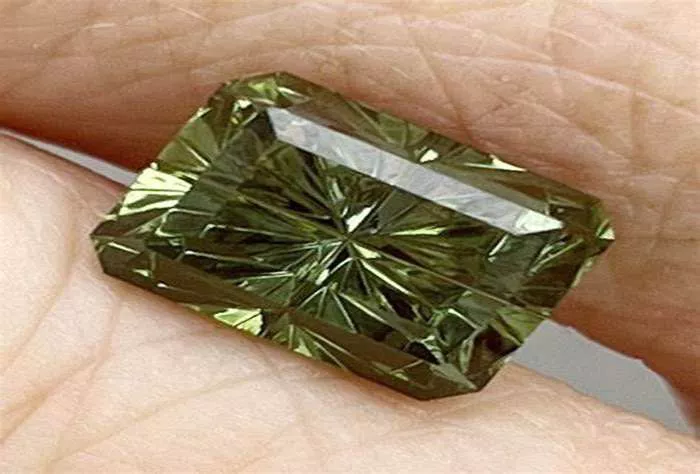Green tourmaline is one of the most fascinating gemstones in the jewelry world. Many customers ask me whether it holds real value, both in terms of money and metaphysical properties. The answer isn’t simple—green tourmaline’s value depends on several factors, including color, clarity, size, and origin. As a jeweler with years of experience, I’ve seen how this gem can range from affordable to extremely valuable. Let’s explore what makes green tourmaline special and how to determine its true worth.
The Factors That Determine Green Tourmaline’s Value
Not all green tourmalines are equal in value. Some sell for modest prices, while rare specimens can command thousands of dollars per carat. The first thing I look at when appraising a green tourmaline is its color. The most valuable stones have a rich, vibrant green similar to emerald, but without any gray or brown undertones. These pure green gems are rare and highly sought after.
Clarity also plays a big role. While some inclusions are expected in tourmaline, the cleanest stones with excellent transparency are worth more. Size matters too—larger stones with good color and clarity are harder to find, increasing their value. Finally, the origin can affect price. Brazilian and African green tourmalines are well-regarded, but exceptional stones from lesser-known sources can also be valuable.
Comparing Green Tourmaline to Other Green Gemstones
Many people wonder how green tourmaline stacks up against emerald, tsavorite garnet, or peridot. While emerald is generally more expensive due to its rarity and historical prestige, high-quality green tourmaline can sometimes rival lower-grade emeralds in price. What makes tourmaline unique is its range of green shades—from soft mint to deep forest green—giving buyers more options.
Unlike emerald, which is often treated to improve clarity, green tourmaline is usually sold in its natural state. This appeals to customers who prefer untreated gemstones. Additionally, tourmaline is more durable than emerald, making it a practical choice for everyday jewelry. While it may not have the same royal pedigree as emerald, its beauty and versatility make it a valuable alternative.
Investment Potential of Green Tourmaline
Some customers ask if green tourmaline is a good investment. The truth is, while it may not appreciate as dramatically as rare colored diamonds or rubies, high-quality green tourmaline holds its value well over time. Rare specimens, especially those with exceptional color and size, have steadily increased in price over the years.
I always advise buyers to focus on quality rather than quantity. A smaller stone with perfect color and clarity will retain its value better than a larger, lower-grade piece. Limited-edition designer jewelry featuring green tourmaline can also be a smart purchase, as unique designs often gain value among collectors.
Green Tourmaline in the Jewelry Market
In my store, green tourmaline is a popular choice for both casual and high-end jewelry. Its affordability compared to emerald makes it accessible, while its beauty ensures it never looks cheap. I often use it in rings, pendants, and earrings, where its color can really shine.
Designers love working with green tourmaline because it pairs well with different metals. It looks stunning in yellow gold for a vintage feel, sleek in white gold for a modern look, and earthy in rose gold. Its versatility keeps it in demand, ensuring its place in the jewelry market for years to come.
Conclusion
After years in the jewelry business, I can confidently say that green tourmaline is a valuable gemstone—both financially and energetically. While it may not reach the extreme prices of some rare gems, its beauty, durability, and uniqueness make it a worthwhile addition to any collection. Whether you’re buying for its metaphysical properties or simply because you love its color, green tourmaline offers excellent value for the price.
The key is to choose a stone that speaks to you, with the best quality you can afford. A well-selected green tourmaline will not only bring joy when worn but can also be a meaningful piece to pass down through generations. In the world of gemstones, that’s true value.
Related topics:


